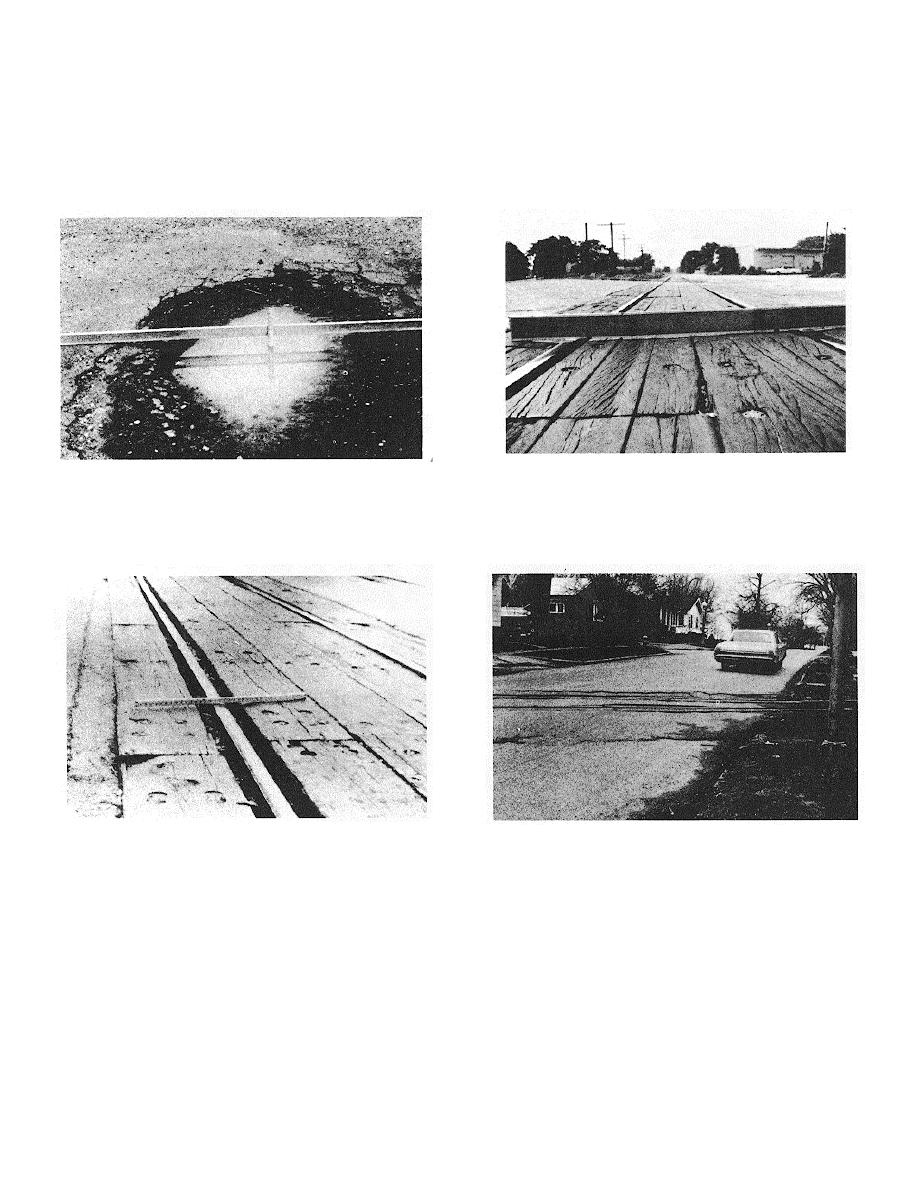
TM 5-623
How to Measure:
Potholes are measured by counting the number that are low-, medium-, and high-
severity and recording them separately.
Name of Distress:
Railroad Crossing.
Description:
Railroad crossing defects are depressions or bumps around and/or between
tracks.
Severity Levels:
L-Railroad crossing causes low-severity ride quality (fig B-53).
Figure B-53. Low-severity railroad crossing.
Figure B-52. High-severity pothole.
M-Railroad crossing causes medium-severity ride quality (fig B-54).
H-Railroad crossing causes high-severity ride quality (fig B-55).
Figure B-54. Medium-severity railroad crossing.
Figure B-55. High-severity railroad crossing.
How to Measure:
The area of the crossing is measured in square feet of surface area. If the
crossing does not affect ride quality, it should not be counted. Any large
bump created by the tracks should be counted as part of the crossing.
Name of Distress:
Rutting.
Description:
A rut is a surface depression in the wheel paths. Pavement uplift may occur
along the sides of the rut, but in many instances, ruts are noticeable only after
a rainfall, when the paths are filled with water. Rutting stems from a
permanent deformation in any of the pavement layers or subgrade, usually
caused by consolidated or lateral movement of the materials due to traffic
loads. Significant rutting can lead to major structural failure of the pavement.
B-19



 Previous Page
Previous Page
